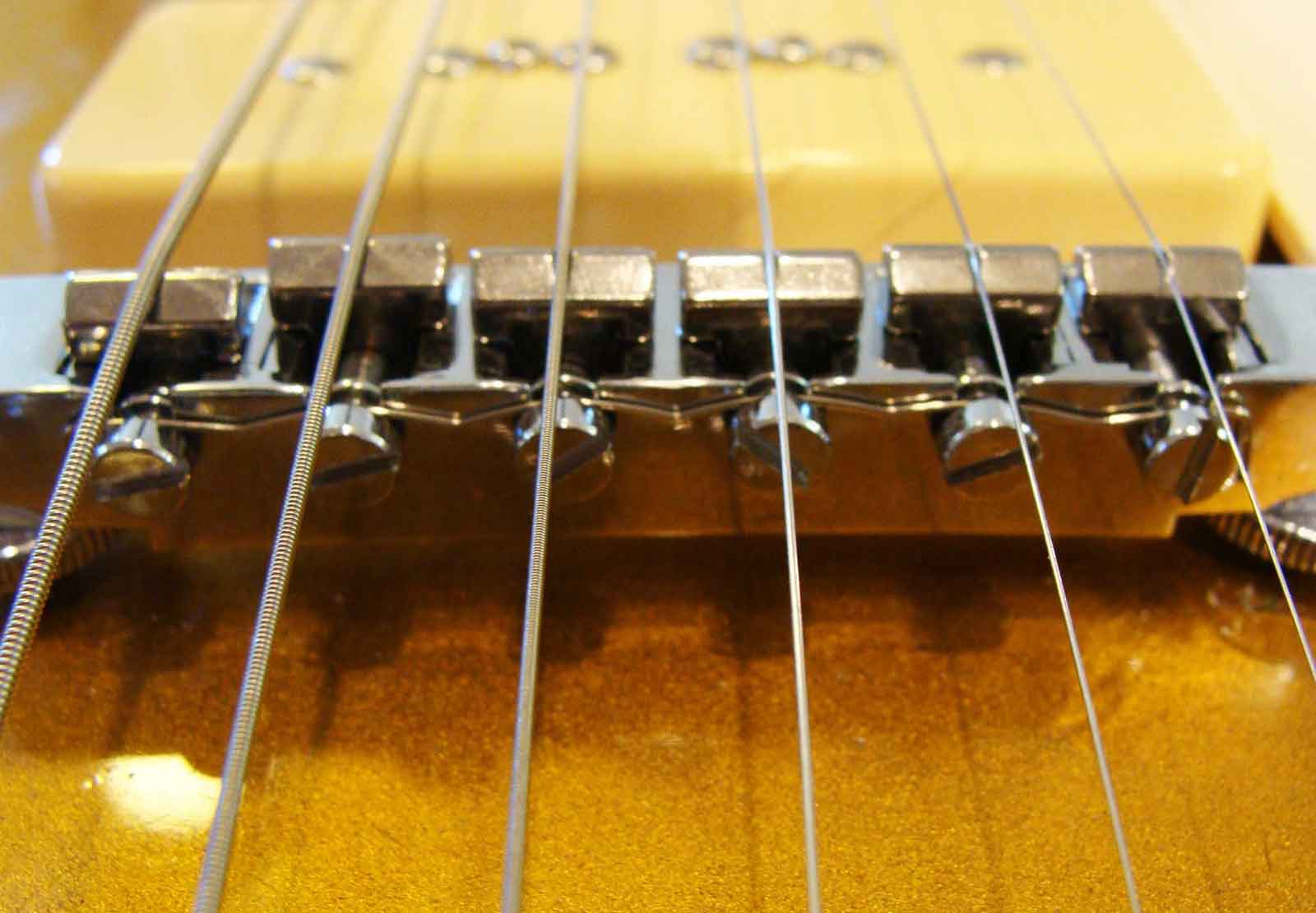Correcting intonation

Tried adjusting the neck on your guitar and things still sound off? Your guitar may need its intonation adjusted.
What you'll need
- Screwdriver
- Tuner
Step 1 – Check the intonation
The first thing you want to do is make sure your guitar is in tune. Play the open bottom E string and make sure your tuner reads it as E. Then hold down the 12th fret on the same string and see pluck it. If the tuner reads the same note, that string is okay and will not need to be adjusted. It the note is different, it will need to be.
Continue this process with each string and take note of which ones you will need to correct and whether they were higher or lower than the open note.
Step 2 – Adjust the bridge
To correct a strings intonation, you will need to adjust the bridge. Follow the string that needs to be corrected down to the bridge and you will see the saddle, this is how you will correct it. Using a screwdriver, you can bring the saddle in and out. If the note at the 12th fret is too low you need to bring the saddle out to shorten the string, this is done by turning the saddle screw counter-clockwise. If the note is too high, do the opposite.
Very small adjustments are the way to go here, half turns, otherwise you might overshoot the right point and end up with the opposite problem.
Step 3 – Retune
After each turn, retune the string and check its intonation. Repeat until the string reads the same note on the open and at the 12th fret. Then continue with each string until the guitar has correct intonation.
Correcting Intonation Quiz - How much can you remember?
- By tuning it
- Comparing the note of a string when open and at the 12th fret
- Replacing the tuning pegs
- Bringing the saddle in
- Removing the saddle
- Bringing the saddle out